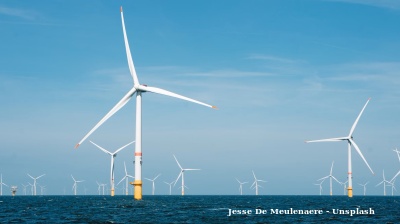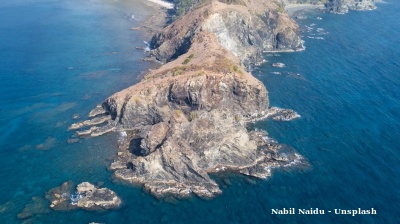Fermi America, a private energy developer in the United States, is moving ahead with what could become one of the most significant privately financed clean energy projects globally. The developer has signed binding agreements with two South Korean power and engineering giants Doosan Enerbility and Hyundai Engineering & Construction to assist in constructing four AP1000 nuclear reactors in Texas. These reactors will serve as the main power source for a large-scale computing and energy campus designed to support advanced artificial intelligence systems. According to World Nuclear News, the project represents a shift in how data and computing centres could be powered in the future, as it aims to rely on reliable, clean and high-capacity power rather than public electricity grids.
Private energy ecosystem for AI
The development, named Project Matador, was announced in June and will be located in Amarillo, Texas, in partnership with the Texas Tech University System. World Nuclear News reports that the project is designed to function as a behind-the-meter HyperGrid campus, meaning it will generate and manage its own power on site and distribute it directly to energy-intensive computing rather than relying on public utilities.
Project Matador is intended to become the world’s largest energy-driven artificial intelligence complex. Once completed, the site will integrate nuclear power from the four Westinghouse AP1000 reactors with a vast combined-cycle natural gas facility, solar installations, battery energy storage and selective access to power from conventional utility grids. Fermi America expects the campus to deliver one gigawatt of energy by the end of 2026 from non-nuclear sources, giving the computing campus operating capacity while nuclear reactors undergo licensing and construction.
The developer views Project Matador not simply as an energy plant but as a new model for powering digital infrastructure. The concept is centred on maintaining energy independence and providing a stable power supply to artificial intelligence systems, reducing exposure to grid instability or power shortages.
Regulatory progress and construction timeline
On June 17, Fermi America submitted its Combined Operating Licence Application to the United States Nuclear Regulatory Commission. According to World Nuclear News, this application covers both the construction and operation of the four AP1000 reactors, and it was accepted for review in September. Reaching this stage places Fermi America ahead of many competing private nuclear proposals in the country.
The developer has already begun ground analysis and geotechnical work at the site. Fermi America plans to begin construction of the nuclear power complex next year, with the first reactor expected to become operational by 2032. World Nuclear News states that the remaining reactors will follow in subsequent phases. This timeline highlights the developer’s aim to bring nuclear energy to market more rapidly than past American nuclear projects, supported by proven technology and experienced partners.
Doosan Enerbility: component provider
To avoid delays that often occur due to equipment procurement, Fermi America has signed an agreement with Doosan Enerbility. World Nuclear News reports that under this agreement, Doosan will begin forging the large and complex reactor pressure vessels and steam generators, which are essential components for AP1000 reactors. These pieces require long lead times and specialised manufacturing capacity. By reserving production slots now, Fermi America positions itself ahead of other developers who may depend on the same supply chain.
Fermi America said that this early commitment ensures priority placement in the supply chain and demonstrates that Project Matador is transitioning from planning into execution. The agreement is described as a strategic step that keeps the project on schedule and reduces risk during later construction phases.
Hyundai Engineering & Construction: turning plans into designs
In parallel with the Doosan agreement, Fermi America has signed a Front-End Engineering Design contract with Hyundai Engineering & Construction. According to World Nuclear News, Hyundai will produce the engineering foundation for the reactors, including the overall site layout, evaluation of cooling solutions suitable for the climate in Texas, and a detailed budget and construction timeline for the first phase.
This contract builds on a memorandum of understanding signed in July between the two companies. Under that MoU, both parties committed to collaborate on planning and executing the hybrid energy model, preparing construction work packages and advancing toward a full Engineering, Procurement and Construction contract, expected in early 2026. World Nuclear News highlights that this agreement signals early contractor involvement on a scale not commonly seen in American nuclear developments.
Why Korean nuclear expertise matters
Doosan Enerbility and Hyundai Engineering & Construction are both known for their strong global track records in nuclear power. South Korean builders are recognised for completing nuclear projects on time and within budget, something that has historically challenged nuclear development in the United States. Hyundai emphasised that this contract marks the first time a South Korean company has secured a large nuclear construction project in the United States. World Nuclear News notes that Hyundai also claims to be the only firm in nuclear power construction history that consistently delivers on schedule and on budget.
Fermi America stressed the importance of working with partners that have real-world experience constructing large nuclear facilities. Company co-founder Toby Neugebauer said that Doosan and Hyundai represent the hands-on experience necessary for delivering nuclear energy at the pace expected by the US government and energy markets. Mesut Uzman, CEO of Fermi Nuclear, added that securing the FEED contract with Hyundai and forging commitments with Doosan represent the moment the project shifts from vision to implementation. Doosan’s president Jongdoo Kim said the company was eager to support Project Matador because Fermi America has consistently followed through on commitments.
Project Matador is more than a single development. If it succeeds, it could serve as a blueprint for future energy-intensive industries. Instead of relying on the strained national power grid, large computing centres could generate and control their own dedicated energy sources powered by nuclear energy and supported by complementary generation technologies.
Features

CEE needs a new growth model as FDI plunges
wiiw economist Richard Grieveson says the CEE region’s long-standing model of attracting FDI through low labour costs no longer works.
KSE: Ukraine is facing a $53bn budget shortfall, but economy is stable for now
Ukraine is in urgent need of additional financing from partners as the continuation of the war drives up defence spending and reconstruction needs, jeopardizes budget financing, weighs on the balance of payments, and slows economic growth.

PANNIER: Ruling family’s ‘palace in the sky’ cruel sight for Turkmenistan’s poor souls down below
Photos posted of renovated Boeing by US makeover manager offer further insight into "ultra-luxurious" world enjoyed by Berdimuhamedovs.

Russia tax service targets Russian accounts in UAE
The Russian Federal Tax Service (FTS) has ramped up its scrutiny of Russian nationals holding accounts in the United Arab Emirates, following the effective implementation of automatic tax information exchange between the two countries.




